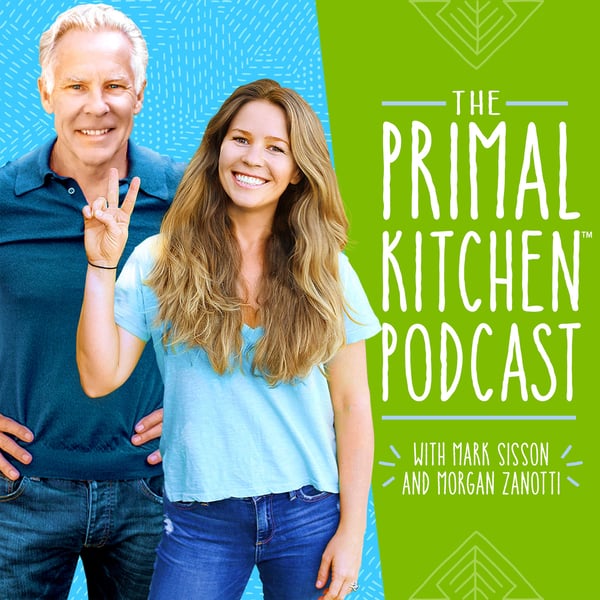5 Non-Dietary Factors That Influence Your Microbiome
The Primal Kitchen Podcast
Mark Sisson & Morgan Zanotti
4.4 • 717 Ratings
🗓️ 25 July 2017
⏱️ 14 minutes
🧾️ Download transcript
Summary
Our goal, then, is to improve our microbiological real estate in the many areas of the body that commensal and symbiotic bacterial like to put down roots—the gut, mouth, lungs, skin, reproductive organs, and so on. The average Primal enthusiast is well-versed with the role of food choices and smart supplementation (although research is always uncovering new wrinkles—more on this to come).
I thought I’d give a little attention to some of the other basic practices that can influence microbial diversity and homeostasis. There are more answers and nuances than I can cover today, but let’s start with some of the fundamentals.
(This Mark's Daily Apple article was written by Mark Sisson, and is narrated by Tina Leaman)
Transcript
Click on a timestamp to play from that location
| 0:00.0 | The following Mark's Daily Apple article was written by Mark Sisson, |
| 0:07.0 | and is narrated by Tina Lehman. |
| 0:17.0 | Five non-dietary factors that influence your microbiome. |
| 0:21.6 | The microorganisms that reside in, on, and around our bodies influence almost every facet of our well-being. |
| 0:29.6 | Part of maintaining microbiome health is maintaining homeostasis. |
| 0:34.6 | Another is supporting diversity. |
| 0:36.6 | Our goal, then, is to improve our microbiological real |
| 0:40.7 | estate in the many areas of the body that commensal and symbiotic bacterial like to put down |
| 0:46.3 | roots. The gut, mouth, lungs, skin, reproductive organs, and so on. The average primal |
| 0:53.4 | enthusiast is well-versed with the role of food |
| 0:56.0 | choices and smart supplementation, although research is always uncovering new wrinkles, more on this to come. |
| 1:03.0 | I thought I'd give a little attention to some of the other basic practices that can influence |
| 1:07.7 | microbial diversity in homeostasis. There are many answers and nuances that I |
| 1:12.9 | can cover today, but let's start with some of the fundamentals. Number one, exercising. Over the past |
| 1:20.8 | decade, there's been the odd study examining the link between exercise frequency, duration, and type, |
| 1:27.1 | and the microbial response to such |
| 1:29.1 | in the body. Studies in mice have shown considerable responses to exercise in the lab. A 2016 |
| 1:36.6 | study placed mice on an obesity-causing diet and six weeks of high-intensity interval training, |
| 1:42.9 | otherwise known as HIT. |
| 1:50.4 | The mice placed on the HIT program had markedly increased microbial diversity within the distal gut, along with an increased bacteriotease-fermucase ratio. |
| 1:55.9 | Perhaps even more importantly, the microbiome of the H hit mice appeared to resist the typical adverse changes |
| 2:02.4 | to the gut microbiota that occur with the onset of obesity. |
... |
Transcript will be available on the free plan in -2805 days. Upgrade to see the full transcript now.
Disclaimer: The podcast and artwork embedded on this page are from Mark Sisson & Morgan Zanotti, and are the property of its owner and not affiliated with or endorsed by Tapesearch.
Generated transcripts are the property of Mark Sisson & Morgan Zanotti and are distributed freely under the Fair Use doctrine. Transcripts generated by Tapesearch are not guaranteed to be accurate.
Copyright © Tapesearch 2025.

